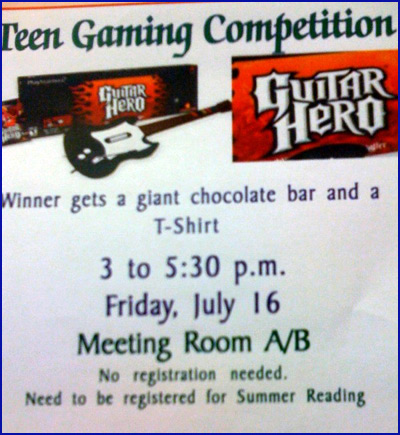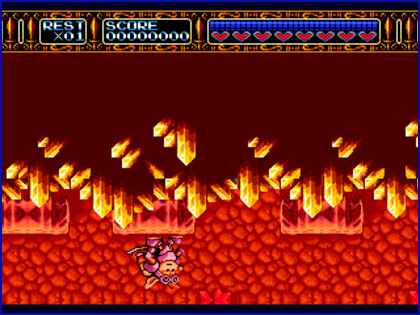
No Registration Needed! Need To Be Registered!
I saw this posted up at the library today and chuckled quite a bit: What I’m pretty sure they are saying is that there is no extra registration necessary for their little Guitar Hero competition, […]

I saw this posted up at the library today and chuckled quite a bit: What I’m pretty sure they are saying is that there is no extra registration necessary for their little Guitar Hero competition, […]

I won’t lie. I sometimes lurk around other forums. There are only a couple I regularly keep up with (my own, the FUNimation DB forum section)… but there are a couple others I have bookmarked […]

We somehow lost our digital camera’s battery charger a while back. Since we buckled down and purchased a replacement one, I have been looking around for random things to take photos of. It is one […]

Regular fans of Daizenshuu EX no doubt have heard us drop Appule’s name in semi-sarcastic and humorous ways. It has grown into something of an “in-joke” over the years — it is funny enough on […]

I was both anticipating (expecting, really) and dreading this day — today was the day that the “daizex” YouTube account was removed due to “copyright infringement”. What makes it so delicious is the “third strike” […]

Every so often I like to just kick back and read through all of the various boxes and instruction books for my old, Japanese DragonBall video games. I happened to be scanning through the Super […]

It has been over a year since I last wrote about and shared how the magic of podcasting goes down at Casa de EX. A lot has changed since then, but I just have not […]

You are going to get a little bit of meta-material and genuine game analysis in a single post. That is awesome. A few years back when I first pitched the idea of “vgconvos” to Andrew […]

Yesterday, I headed down to summon/fight/capture Lugia in my copy of Pokémon SoulSilver Version for the Nintendo DS. I had originally started the game on my “DS Phat”, but for the last several days, I […]

It may take us six months, but we eventually hit you back with a show…! When we realized (upon gorging on pizza and beer) that the core group was actually all together at the same […]
Copyright © 2025 | MH Magazine WordPress Theme by MH Themes